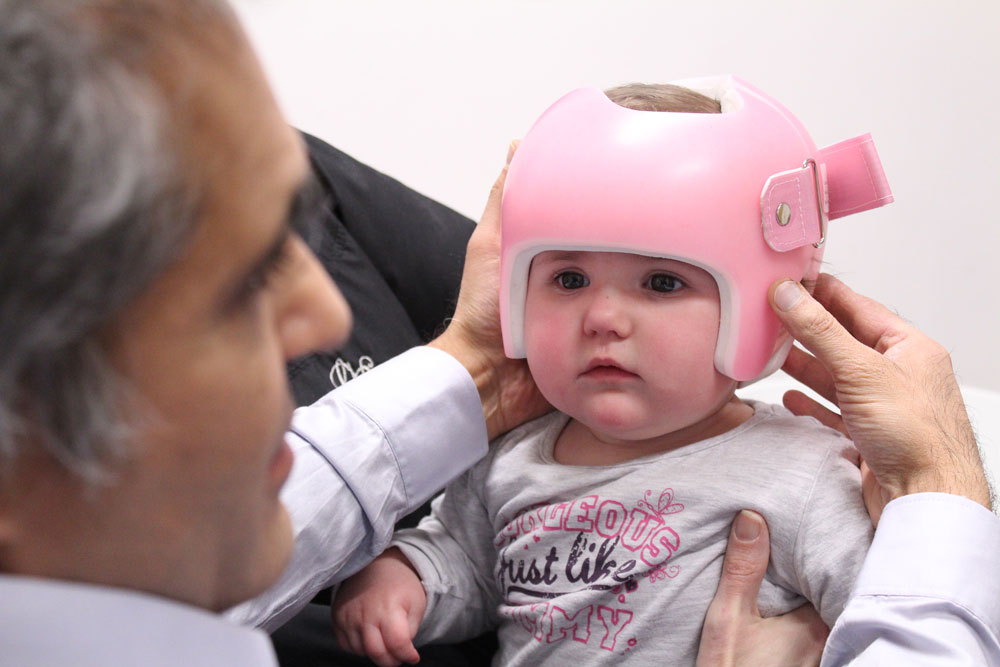
06 July 2020
A paper published in May 2020 confirms what the LOCband clinicians see in everyday practice….
Weersma et al (2020) The Effect of Age on the Rate of Correction in Infants with Head Shape Deformities Treated with Cranial Remolding Orthoses conducted a retrospective study to determine how age affects the rate of correction in infant head shape deformities.
A total of 396 participants were included in the study. Head shapes were categorized into plagiocephaly, brachycephaly and asymmetrical brachycephaly (combination).
The participants were also separated into age groups.
The study concluded that the fastest rate of correction occurs when cranial remoulding treatment is commenced between the age of 4-6 months. Importantly the study also states the rate of correction declines quickly as the child ages.
At LOC we always see quick and considerable improvement to head shape with babies in the 4-6 months age group. Good progress can also be made with older babies, but this study reiterates the importance of age-related to the overall success of helmet treatment.
We as health care professionals must use evidence-based practice in our treatments and this is an important published document that will help us effectively advise parents to make informed decisions.
At LOC we offer free clinical assessments for all families with babies from the age of 3 months.
Ref: Weersma, Lance A; Cordial-Stout, Melissa L; Gascho, Briana R; Nolin, Rachael L (2020) The Effect of Age on the Rate of Correction in Infants with Head Shape Deformities Treated with Cranial Remoulding Orthoses, JPO, doi:10.1097/JPO.0000000000000307
This is very much dependent on how fast your baby is growing. The faster the growth, the more frequently your baby will be seen so that the helmet can be adjusted. In general, reviews will happen at two to four-week intervals.
The price of treatment covers:
Yes - All babies that have completed their course of treatment with us have achieved a measurable improvement in head shape. However, you don’t have to take our word for it.
Recent independent research conducted by a University Hospital in Germany has endorsed the treatment for babies with moderate or severe plagiocephaly.
A larger, retrospective study has just been published that found complete correction was achieved in 94.4% of babies treated with helmet therapy.
The results were conclusive: repositioning achieved acceptable correction in 77.1% of cases, but 15.8% were moved onto helmet therapy because re-positioning was not working. Meanwhile, 94.4% of the infants who started in the helmet-treated group achieved full correction, as did 96.1% of those who were transferred from the repositioning group into the helmet-treated group.
Further information can be found on our Plagiocephaly Research page.
If your baby has a temperature or a fever due to illness you must remove the band. The band can be put back on once the temperature has returned to normal.
The optimum age for treatment is between four and seven months.
This is because the skull is most malleable at this age and improvements to head shape tend to take less time and are more dramatic. That is not to say that helmet therapy should be ruled out if the baby is older than seven months. Routinely, babies up to the age of 16 months can be treated very successfully.
The cut off age is around 18 months when the fontanelles (soft spots on the head) are no longer malleable. As babies grow and develop at different rates, it is always worth checking if you are not sure. There have been cases where a baby’s fontanelles have not fused yet by the age of 18 months, who have achieved successful, but less-marked results with cranial remoulding therapy.
The clinics and clinicians that provide this treatment in the UK will have received similar training and experience. However, we are the only clinic that manufactures its own helmet and our clinicians are closely involved with the process for each individual helmet that we produce.
In addition, we do not restrict review appointments to a set number, we are extremely flexible and respond to individual parents' needs so that the best outcome can be achieved for each baby.
Torticollis is a condition in which a tight or shortened muscle in one side of the neck causes the head to tilt or turn to one side, resulting in the infant resting its head in the same position. In 2013, we analysed the data from all first appointments in our Kingston clinic and found that 20% of the babies examined had some kind of neck condition that was causing head immobility.
The LOCband is non-invasive and works by applying gentle, constant pressure over the areas of the baby’s skull that are most prominent while allowing unrestricted growth over the flattened areas. The band consists of a soft foam layer inside a thermoplastic shell. As the baby grows, the band will be adjusted frequently to gently guide the skull into a more symmetrical shape.